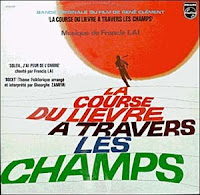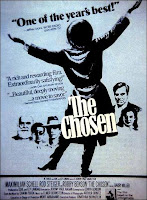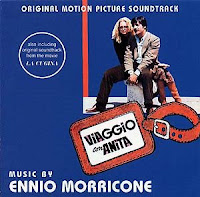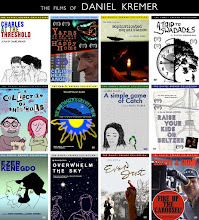Dedicated to William Cully Allen, a true rescuer, to whom I am grateful.
For the first year I lived in New York, a recurring dream seemed to taunt me and haunt me at least one night per week. In it, I had completed shooting a feature-length film almost entirely on my own – and the great thing was that there it was, just waiting to be put together and edited, there in this dream world, and the greatest source of comfort was just in knowing that the pieces were just ready to be given a working-over. That alone was enough because the possibilities about its outcome were limitless. It was exciting. The world was so immaculately open. Various other dream scenarios would fashion themselves around this feature-film that existed only in these dreams, and the project often stood as the incentive, the oasis, from the worries and the weight that had cumulatively built up around my life and manifested themselves in these dream narratives.
I would soon awaken and, in that place between asleep and awake, I would ruminate about how very lucky I was to have a film on the proverbial “editing table,” just waiting to be put together. In this in-between place, I romanticized it and likened it to a browbeaten aspiring writer, returning from a day “in the trenches” at a dead-end job and plugging away on an Underwood or Remington Portable – the novel (or, in this case, the film) acting as a possible tunnel from hardship and obscurity, ultimately to all manner of security, even if it failed. When I became fully conscious, I realized that I had no feature film ready to be edited. It did not exist. It was only a dream. I had nothing, zippo, bupkus, kadoches. I didn’t even know what this “dream film” had been about. It could have been about anything for all I knew. The point was that it wasn’t there anymore as it had been when I was asleep. For all I cared, it could have been shot on a $100 used consumer Handicam purchased at Best Buy or Wal-Mart. It didn’t matter. I just wanted it to exist so badly.
I would then go about my day in vague disappointment, wishing that somehow it existed or that it would exist soon. I suffered from a general whopping creative block around this time, and really had nothing I found worthwhile doing. The dreams just compounded my frustrations. I was rather demoralized and felt I had dried up. Not to be melodramatic, but I thought it was a permanent condition. I thought then that maybe my recent Jewish religiosity had softened my drive to make films. No, I then thought. I knew I had the fire, and the drive to make an ambitious project like this hypothetical film happen. It just wasn’t there yet, but the worst part was that it looked like it was not going to arrive for awhile, if at all. It wasn’t like me. I was, at one time, so prolific and churned out things like it was nothing. A lot of stuff I made was bad, but I was constantly working, and had an intense need to keep working. Those days seemed no more. I hit the panic button. Just go out and shoot something, I told myself, and keep shooting and shooting and shooting until, for better or for worse, the feature at last would exist. “Foolishness,” I would say to myself, “That’s just silly. It wouldn’t be a film at all, just a desperate stunt that no one would watch.” The dream continued to play out over and over, the in-between place between asleep and awake continued deluding me and months passed me by. With the loss of a creative drive, I felt the sadness of losing a best friend.
By early summer 2010, I was ready to chuck the filmmaking thing and resign myself to rabbinic studies forever. It seemed I was more passionate about that than my desire to make films. I can’t do it anymore, I told myself, and went around justifying what people perceived as a startling decision…with an internal numbness. Kremer is quitting film! If a project I found worthwhile turned up later in time, I told myself, I might try to pursue it, but that was that. A then-recent unpleasant experience in Los Angeles had also served in disillusioning me and rattling my cage. I decided definitively that the very world of filmmaking was not for me. I thought, one might say pretentiously, of Rilke's "Archaic Torso of Apollo" once again in relation to my life, “for here there is no place / that does not see you. You must change your life." These words had a habit of returning at various points throughout my quarter of a century to haunt me again and again.
That’s that, then. Goodbye, filmmaker Daniel Kremer. Hello, Rabbi Daniel Kremer. And off I went, throwing myself headfirst into the new pursuit, got myself into a good yeshiva and tried not to look back. A profound part of me remained profoundly depressed, though. It was not easy realizing or believing that I had dried up. I never thought it would happen, let alone to such a degree. I found myself becoming alienated around friends who were still creatively active, even though I tried to hide this feeling from them and make it seem that, with the exception of the news of my new career path, all was the same. It wasn’t. Don’t get me wrong; I’m still pursuing becoming a rabbi and that fulfills me equally as much as film. But I still felt like a widower. My long-time wife, cinema, had died and left me as half and alone. I sat shiva for it in a manner of speaking, but tried to take my mind off it. I cried for its loss. It was perhaps one of the hardest periods of my life thus far. I had never before wanted to cash in the chips with film. I had never given up on much of anything. No one has known the degree I felt this until now. I didn’t tell a soul. I alluded to it to a single friend. It was damn hard hiding the fact that I felt an emptiness and it was the first time I lost total belief in myself. I loved film and it had flown the coop on me. My muses jilted and cuckolded me into a cruel timidity.
.jpg)
In July 2010, I received a call from William Cully Allen, my ex-professor, close friend and a loyal member of a repertory acting company I kind of helped form. His spirit always managed to make me feel better, no matter what mood I was in. Bill always seemed positive and full of energy. I envied him for it. He told me that the time had finally come to make the documentary that was his lifelong dream project: a bio of his doctoral advisor Bibhuti Singh Yadav, the controversial philosopher of Indian religions. Bill told me, “You’re coming to India with me on a trip. We’re going to do this thing.” The prospect of a trip to India made me burst with a new excitement. I didn’t know about the filmmaking aspect of it. I doubted myself so much, and my capabilities. I’d certainly shoot, but then doubted I would have the energy to put it all together when push came to shove. I was also traversing a new path now and felt trepidation at any aversion or detour on that path.
I thought about it. The idea of a second film was brought up. Hey, we would be in India together, an amazing location. I would be there with an actor I had worked with a total of four times. Picture yourself (and Bill) on a boat on a river. The River Ganga. Danny in the sky with cameras.
For the life of me, I couldn’t thing of a single blasted thing to do the second film about. Just go over and shoot something. You never know what will happen until you’re on-site the camera starts shooting. I started writing scenarios in script form for this second project. As far as I’m concerned, it was all total nonsense. I sent these to a couple people. I didn’t like what was happening. I got blasé about it. “If I shoot something, I shoot something. If I don’t, that’s okay too. I have another life to return to.” I started packing for the trip on a shabbos, and still I had not a clue about what this second film would be, or for that matter
if it would be.

I boarded the plane to Zurich. I listened to music nonstop, my old “writing music,” and started thinking long and hard about the other movie. I really wanted something to happen and I really wanted to make it happen. I felt crippled. The non-Chassidic part of my head kept saying, “Fuck it! You’re finished! What you’re doing right now is a farce! You’re not going to come up with anything! Quit now!” I fell off into a troubled sleep. Upon waking, the first thing I thought was, “I just have to do this. I’ve gotta come up with something. This is make or break. Bill’s ready to do something and I’ve gotta just do it.” In my head, I got to quoting
The Music Man…at a pivotal moment, Robert Preston, about to be tarred and feathered if he doesn’t prove himself to the people of River City says, ”Now think, man. Think!” Do or die. Again, this is not wanton melodrama. This is really what I was going through.
Then, the clouds parted, and suddenly, it hit me like a ton of bricks. The memory of unfinished business blazed a glorious trail of light through my brain. The memory that I had long wanted to do a film that paid tribute to and echoed the “journey films” of the early 70’s American New Wave, the films that had so left a mark on me even as a pre-teenager building the encyclopedic knowledge people have come to know me for.
Five Easy Pieces,
Scarecrow,
Two-Lane Blacktop,
O Lucky Man!,
Zabriskie Point, countless others. I remembered something Bill had told me about his own life, i.e. having hitch-hiked across country at the age of sixteen in the late 60’s. Lightning had struck! I had my answer, I had my film. Furiously, I began writing. When I got off the plane in Zurich, I immediately e-mailed my best friend about the film story. He had heard tons of bad ideas come out of me the weeks preceding the flight to India. At last, there was one that stuck.
I arrived in Delhi and had a night to stay there before flying to Varanasi the next day to meet Bill. There he was, waiting there outside the airport door, standing amongst a solid congregation of Indians awaiting the arrival of a dignitary, ready to lock me in a friendly embrace, next to Pappu Rai, an assistant and longtime friend of his who would ultimately play a part in acting and producing the India leg of the film. Pappu did more for both films than anyone has yet given him credit for. I told Bill my idea. Originally, it seemed there was some trepidation, but he seemed open to the concept. I was whisked off right away to remote rural India, to the village of Tulasipur, where the Yadav family resided. The next morning, the sacred, enduring (and banned) karaha ritual would be performed for the benefit of my camera. I would be one of the few Westerners to have ever seen this performed live. I felt like Marty McFly to Bill’s Doc Brown. On the roof of a half-finished school in remote rural India, on two wooden hammocks by nightfall, Bill went off quoting Dylan tunes and reciting a variety of other things that found their way into the film. This was the beginning of something good, as the old song says.
.jpg)
The karaha ritual I will never forget witnessing, until my dying day. What’s more, though, is that something unexpected and frightening happened during it. The ritual involves, partly, immersing bodies in sacred flames and immersing one’s limbs in boiling hot cauldrons of milk. In the middle of the ritual, Bill was called up to have it done to him. He had no idea this was going to happen. Afterwards, a little shaken up, he said to me, “You’re not using that footage of me in the documentary.” I was crestfallen, because it looked so spectacular. Then, he said, “You’re using it in the other movie!” Flattered that he entrusted me with such amazing footage for my own work, and rather stunned, I excitedly started planning everything around this central sequence.
We returned to the city of Varanasi and started shooting more and more, sometimes even with the benefit of extras. One night, Bill and I stayed up until the wee wee hours of the morning. He confided in me that night about his experiences on the road in the 60’s and the things he had seen, and entrusted me with his story, openly and (it seemed) willingly. I told him why the film was so important to me and how it was make or break. He understood because he had felt the same way about the documentary for years. He felt an equal stagnancy. It felt like a real connection and bond was made between director and actor. We became co-conspirators. I was riveted by what he told me that night. I was reawakened. I was rebirthed into filmmaking. I was reinvigorated. That was, until what I thought was the arrival of disaster.
I had shot a great amount of footage for both projects. All I needed to complete the second was a single shot in a field of tall grass in the Yadav village – the climactic emotional moment for my lead character. The patriarch of the village was not keen on this idea. Initially, he forbade it. Then, he softened but said we could only do it under his watchful eye. It was the pivotal moment of the film, the character’s finally emotional realization. I shot what I could of it, but a mushroom cloud went off in my brain. All that shooting and now I don’t have my ending! I would be leaving to return to the U.S. in a day’s time. I had no time left. I didn’t have a film. I was angry…angry at the Yadavs, angry at being reinvigorated only to be cut short so close to the finish line. I tried to keep my cool, but I think I was visibly upset and Bill knew it. I was so close and so very far away. It was never like me to quit, but in my mind I couldn’t think of anything to do to cover up the lack of an ending. Keep in mind, now, that at this point in time, the second film is still, in my mind, a short film and not yet a feature.
The next day I was put on the plane with assurances from Bill saying, “You’ll think of something, Dan. You always do. It’s going to be a masterpiece” and all that. I didn’t believe him. I felt patronized. I was angry at the world really. The movie’s finished, I decided. Screw it. I threw in the towel. I had no ending. Nothing could change that. All the work of the Indians who had assisted so generously in the making of the film, all my efforts, all Bill’s efforts, all for naught. I admit now that that was a fatalist, defeatist attitude. But the project was so important to me now, and a door had been closed right in my face.
Then, another magic airplane moment occurred. I came up with a way of using the footage that
had been shot in the field by using an alinear chronology in the film. By shooting a frame back in the U.S., the film could be saved. I was relieved and a smile was able to return to my face.

We started shooting the U.S. scenes, which I had written in script form. Everything in India had either been improvised or “written” on the spot (I’m not putting those parts down because they do work). Glenn Walsh, whom I had directed in three previous films, only one of which has been ever screened, was conscripted to star as Bill’s character’s old friend and the film would be framed partly by their discussion at various parts, with the use of Glenn’s fantastic, rustic family house – the house his grandfather had built. Truly magical moments transpired on that set to me. I called upon friends of mine to crew. Aaron Hollander returned as my DP from
A Trip to Swadades and shot most of the American sequences. Andrei Litvinov, the first person I befriended in my freshman year of college, recorded sound. John Gross, my roommate of three years in college, was an all-purpose man. Various people stepped in and out of roles, but it was good to be back in the saddle with people I loved and trusted. The set was pure fun and everyone was in good spirits. Once I again, I felt the same invigoration.
Now the funny thing was that this project just grew, and grew and grew and grew. It was without a doubt an accidental feature-film which just kind of happened. I originally didn’t envision this as a feature-length film at all. But even after shooting with Glenn Walsh in the U.S., the ideas just came fast and furious and I wore Bill down with additional shoots -- in Manhattan, on Long Beach, reschedules because of rain-outs, trips up to Montreal. He occasionally had doubts, I know, about how it was all going to come together. In his words, “I just do what you tell me to do. I never know how it’s all going to come together until I see the finished product and you always make it great.” This is the man credited as co-writer, harty har har. Upon first preview viewing, his faith and enthusiasm were restored and the validation of my confidence about the film was exactly what I needed at that point. We filmed a Castaneda-esque dream sequence on the amazing acreage of actor K.J. Linhein’s heavily wooded property. I was able to integrate into the film another piece of unfinished business -- the fact that I had long wanted to do a film in some way about Castaneda. Everyone was just a joy to work with and I am grateful to everyone who helped make it happen with me. They helped me prove myself to myself. That’s the best gift anyone could have given me.
I grew apart from my yeshiva studies as a result of the project. I was rushing to get it done in time for a rough cut test screening of the film in California. It was an extreme crunch and I barely got it finished in time. The rabbanim at the yeshiva were perplexed by what seemed like a sudden shift in allegiance, but gave me the benefit of the doubt. The first California screening of the assembly cut was phenomenal. It went through the roof and was met was a standing ovation. I stood before a crowd of the film’s admirers with a new humbleness. This was funny because my "other life" was taking hold. As a result of my “mussar” (the Jewish practice of self-improvement), I heard one the rabbis telling me, in my head, to keep old practices in check. I had the tendency of being a ham at Q&As, answering questions that people weren’t even asking, basking in the fact that I access to a captive audience. This time around, it felt extremely strange to me. It was truly a case of a double life vying for equal chances at the spotlight. I talked to them about how important the film was to me, and how it couldn’t have come at a more critical time for me. It also begat other ideas for films I want to make. My anthem for this film, a song that I played over and over again while actively working on the film was, in fact, “Before the Parade Passes By”.
Before the parade passes by Before it goes on, and only I'm left Before the parade passes by I've gotta get in step while there's still time left I'm ready to move out in front Life without life has no reason or rhyme left With the rest of them With the best of them I wanna hold my head up high I need a goal again I need a drive again I wanna feel my heart coming alive again Before the parade passes by....jpg)
I am still editing the film as of November 1, 2010. I am making the final adjustments to the rough cut. It’s almost there. It needs some massaging as they say. But I will say that this film was a big, bold adventure in its making. My eternal gratefulness is extended to William Cully Allen. Without his faith and belief in my abilities at a critical time, I might have resigned myself permanently to a life asking those saddest words of tongue and pen, “It might have been.” He assisted in helping me find the “derech” (path) that I spoke of in my previous blog entry about Chassidism on film. Thanks also to the Eldridges, the film's producers, for everything they have contributed. The film would not exist without them either. To me, the film speaks about the status of the perpetual dissenter who kicks defiantly against the universe and longs heart and soul for the past that can no longer be, much like it seems most of my characters do. More so, it speaks to that figure’s branding in society. The film will ultimately be transferred to a 16mm print then transferred back to nonlinear for its final cut. It’s a film that, itself, longs for the past that can no longer be, shot on video, transferred to film, only to see its inevitable return. The film itself undergoes the struggle its character undergoes.
So what else is there to say? I finally got that feature I had literally been dreaming about…the one that had tormented and taunted me for a year's worth of dreams. Full consciousness now is greeted with the reality that I do have a film on my “editing table” and the possibilities are limitless and the world feels immaculately open to me. And thanks to the realization that no one says I can’t be both rabbi and filmmaker, we’ll add a “Baruch Hashem” for good measure. For the non-Jews who don’t know it, look it up, ‘cause that’s how I feel. The Rabbi Filmmaker is truly born!
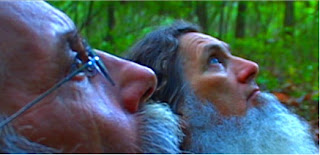
 Nunzio is a rather special Soundtrack Spotlight case to me because I am very close friends with David Proval, the actor who played Nunzio in the 1978 Universal production (filmed, by all the accounts I have heard, during one of the hottest New York summers on record, with both the 1977 black-out and the Son of Sam playing a role, albeit minor, in the film's production). Every time I have seen even short clips of the film, it gives me a profoundly privileged feeling in knowing that the Nunzio character speaks to aspects of David Proval's persona that I have seen emerge endlessly from him in reality, and I am grateful to have known him and to have been one of the beneficiaries of his warmth and trust. David is one of the biggest mensches I have encountered; he truly went out of his way to help give me a start in film world and has encouraged me every step of the way since I have known him. It was through him that I also have met the film's writer, Jimmy Andronica, who also plays Nunzio's brother in the film and is a native to the part of Brooklyn in which the film is shot, and I have spoken with the film's director, Paul Williams, on the phone. It actually doesn't end there, either. I just finished shooting a fundraising trailer for the little boy (now grown man) who played Nunzio's 5-year-old nephew. So, I am not exactly going into this with an air of impartiality. I think highly of the film because, in it, someone I have grown to love and admire as a friend plays a character you grow to love and admire as the creation of a gifted actor whose greatest part this is...and that is including his performance in Scorsese's Mean Streets (third billed after De Niro and Keitel). He plays Nunzio with bold humor, fascinating nuance and gravitas--three ingredients that rarely function so well in confluence. Watching this performance made David one of my favorite actors and I sometimes have gotten a little emotional just watching choices he is making as an actor in this film. So, okay, this is not a review of the film or the actor in the film, or at least it shouldn't be. My prejudices are out in the open about the score, but I nonetheless think an average listener would get a great deal out of Schifrin's usual mastery.
Nunzio is a rather special Soundtrack Spotlight case to me because I am very close friends with David Proval, the actor who played Nunzio in the 1978 Universal production (filmed, by all the accounts I have heard, during one of the hottest New York summers on record, with both the 1977 black-out and the Son of Sam playing a role, albeit minor, in the film's production). Every time I have seen even short clips of the film, it gives me a profoundly privileged feeling in knowing that the Nunzio character speaks to aspects of David Proval's persona that I have seen emerge endlessly from him in reality, and I am grateful to have known him and to have been one of the beneficiaries of his warmth and trust. David is one of the biggest mensches I have encountered; he truly went out of his way to help give me a start in film world and has encouraged me every step of the way since I have known him. It was through him that I also have met the film's writer, Jimmy Andronica, who also plays Nunzio's brother in the film and is a native to the part of Brooklyn in which the film is shot, and I have spoken with the film's director, Paul Williams, on the phone. It actually doesn't end there, either. I just finished shooting a fundraising trailer for the little boy (now grown man) who played Nunzio's 5-year-old nephew. So, I am not exactly going into this with an air of impartiality. I think highly of the film because, in it, someone I have grown to love and admire as a friend plays a character you grow to love and admire as the creation of a gifted actor whose greatest part this is...and that is including his performance in Scorsese's Mean Streets (third billed after De Niro and Keitel). He plays Nunzio with bold humor, fascinating nuance and gravitas--three ingredients that rarely function so well in confluence. Watching this performance made David one of my favorite actors and I sometimes have gotten a little emotional just watching choices he is making as an actor in this film. So, okay, this is not a review of the film or the actor in the film, or at least it shouldn't be. My prejudices are out in the open about the score, but I nonetheless think an average listener would get a great deal out of Schifrin's usual mastery.








.jpg)

.jpg)

.jpg)

